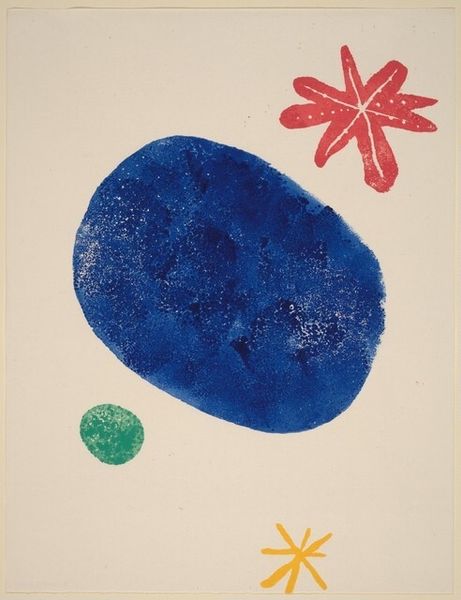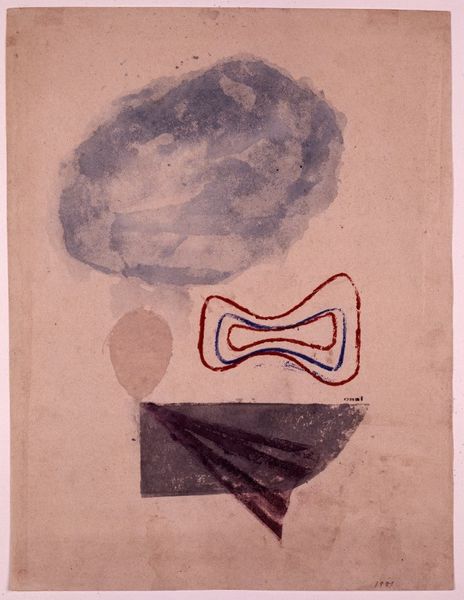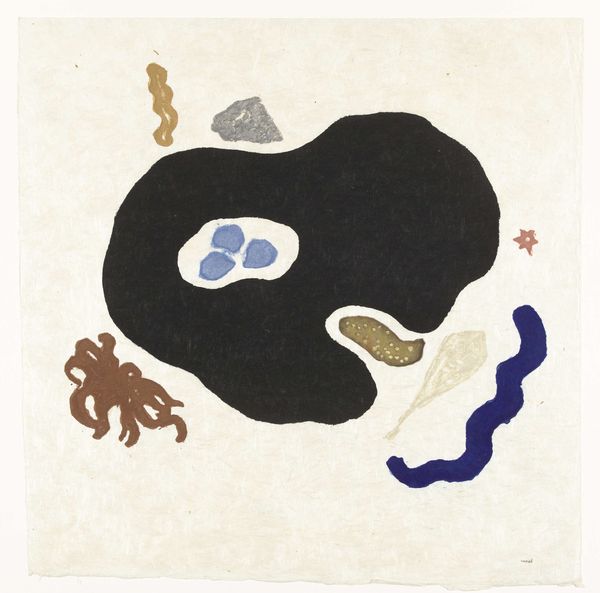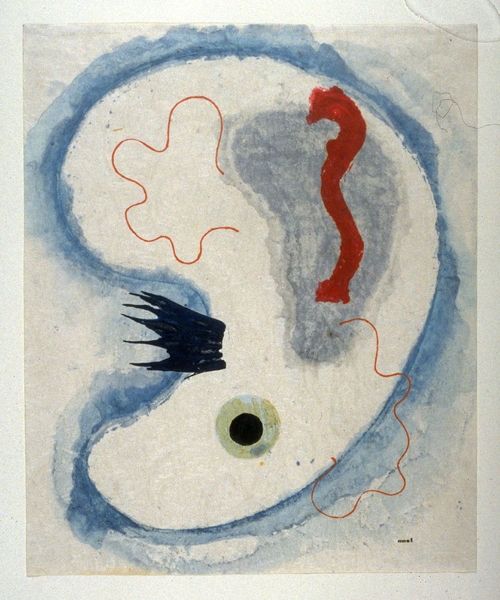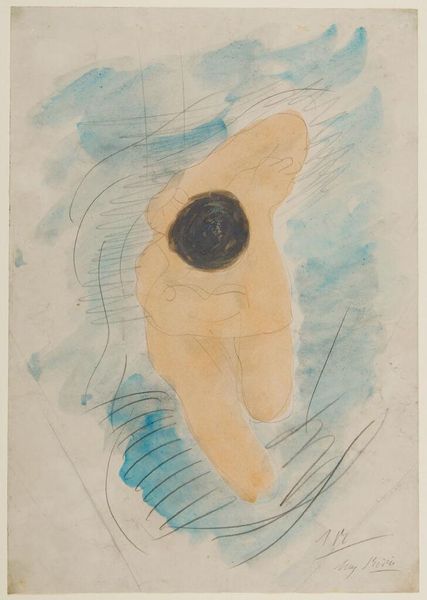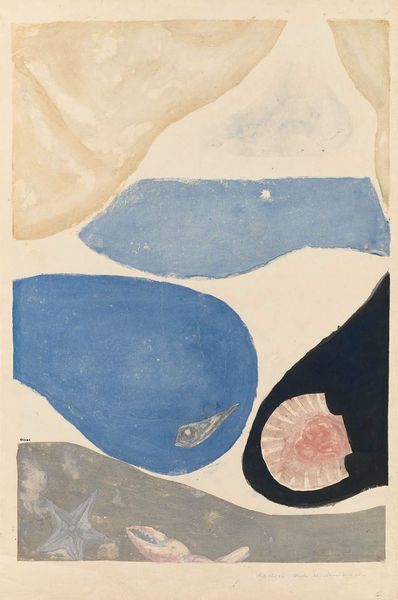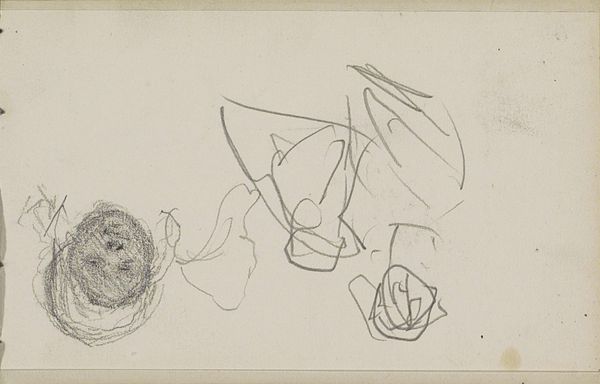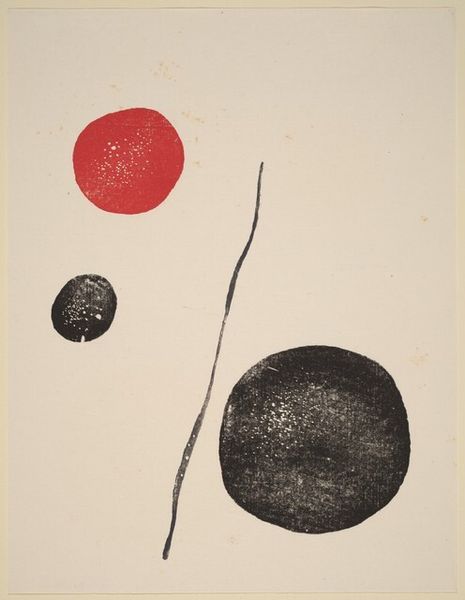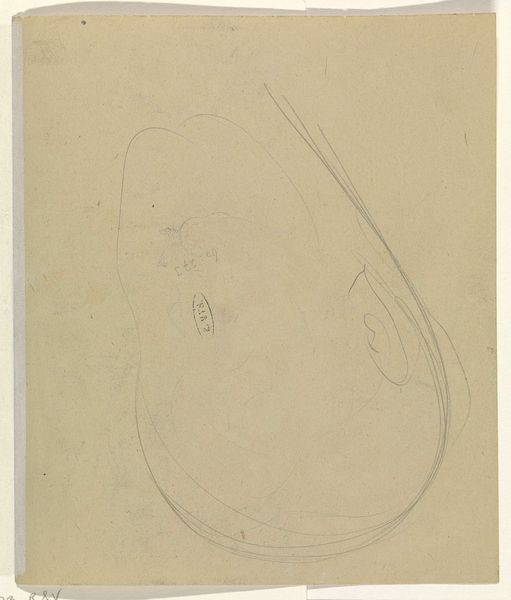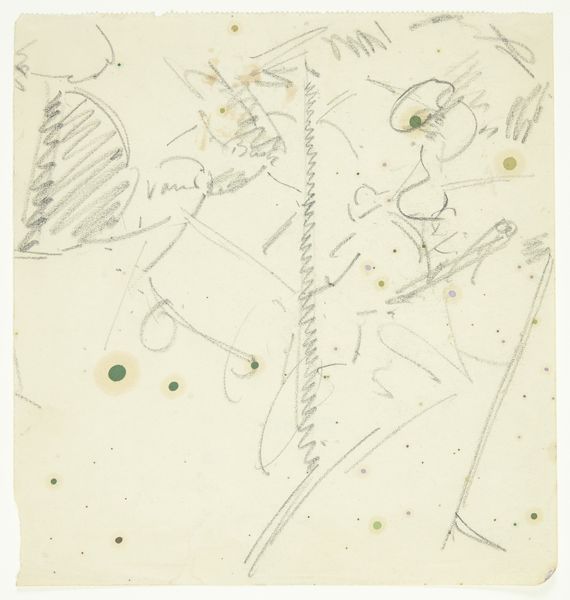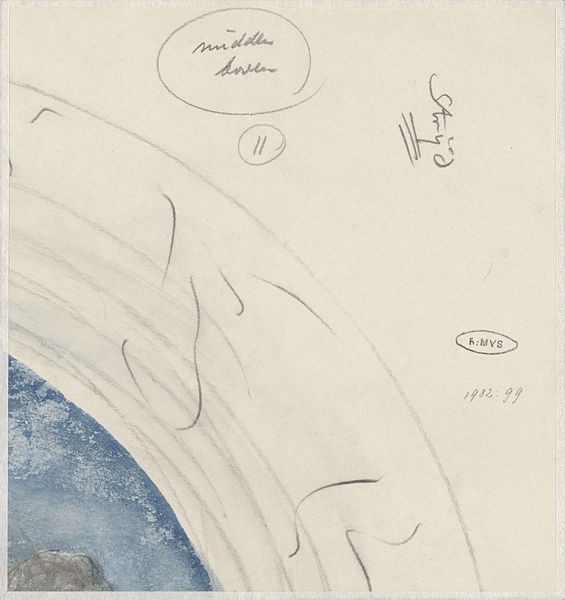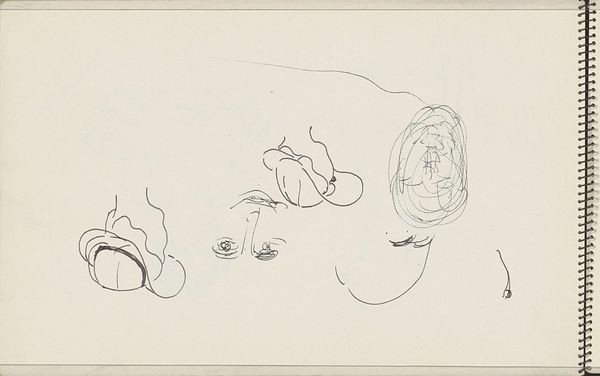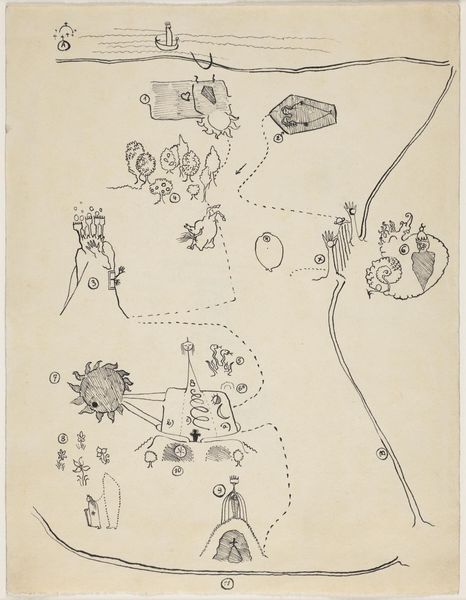
Copyright: Public domain Japan
Editor: This is Koshiro Onchi's "Fairy Tale of the Sea," a watercolor print from 1949. I find it very whimsical. The forms are simple, almost childlike. What do you see in this piece, especially considering the time it was created? Curator: I see a reflection of Japan's postwar identity crisis. Onchi, a key figure in the sosaku-hanga movement, championed artistic self-expression, but here, we see it filtered through the anxieties of a nation grappling with defeat and occupation. This seemingly innocent scene of sea and floating figures, rendered in watercolor, belies a deeper unease. What about the red star? How does that resonate for you? Editor: Well, I see the star and the blue circle, and they remind me of national emblems, maybe referencing power and identity. Is Onchi critiquing traditional representations through abstraction? Curator: Precisely. Consider the context. The ukiyo-e tradition, with its focus on idealized beauty and established power structures, was being questioned. Onchi, through this deliberately naive style, seems to be subverting those ideals. Are we seeing a deconstruction of Japanese identity following a period of intense nationalism? A floating, almost dreamlike world - is it a fairy tale, or a collective trauma? What do you make of the title? Editor: That’s fascinating. I thought it was just a fantastical scene, but framing it as a response to social anxieties makes the imagery far more potent. I wonder if audiences at the time would have read these symbols so overtly. Curator: It’s likely those readings would have been complicated and contested, depending on their personal experiences during the war and occupation. And today, we are still unpacking these complex layers of history and identity in art. The fairy tale then becomes a powerful tool to discuss difficult topics. Editor: This has really broadened my understanding. It’s amazing how much historical context can change the way you perceive even the simplest-seeming images. Curator: Indeed! Art is always in conversation with its time, and with ours.
Comments
No comments
Be the first to comment and join the conversation on the ultimate creative platform.
